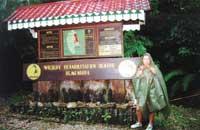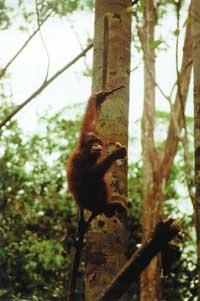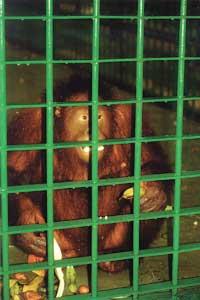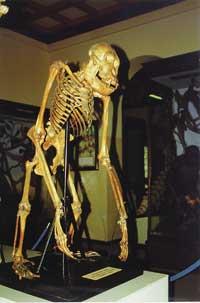ORANGUTANS: orange men

Orangutan comes from orang hutang for Malaysia and means jungle human. Ideal name for this fast orange primate. The orangutan knows very well the numerous types of trees and other plant species of its habitat, and knows when they bear fruit.
Currently, these animals are only found in Borneo and northern Sumatra. Inside Borneo live the Malay provinces of Sabah and Sarawa, and in the Indonesian region of Kalimantan. In these places there are still large areas covered by humid tropical forests, with a little altered temperature and an ecosystem of great publicity, especially in monsoon times (November to February). All this makes large trees covered by lianas and many other plant species grow.

Orangutans, along with gorilla and chimpanzees, form the group of great monkeys and are our closest relatives. Despite being so close to evolution, man is the only predator to attack: deforestation and poaching have considerably reduced the number of these monkeys. Fortunately, the Malaysian government has built two of the national parks and reserves that have in Borneo centers of attention to these and other animals.
EVOLUTION

The first data on hominid evolution comes from Miocene. 15-23 years ago. In Africa there were three genres: Proconsul, Limnopithecus and Rangwapithecus. Later, in the middle of the Miocene (10-13,5 m.u.aprox. ), in Europe
there was the so-called Dryopithecus. At the same time (9-15 m.u. around) Africa and Asia evolved two genres: Sivapithecus and Ramapithecus.
These also had the lower teeth in the form of Y, but their incisors and canines were smaller than the Europeans, while the rear teeth were larger, with a thicker enamel on the edges. They crushed hard seeds and fruits. Orangutans probably come from the Asian branch of these groups. Dental remains found in China, Borneo, Sumatra and Java (1-5 m.a.). around) it is verified that at one time these animals could be all over Asia.

Photo 1.
The Semenggoh Rehabilitation Center was built in 1975 to rehabilitate confiscated or sick wild animals.
It is located in the beautiful rainforest of the Semenggoh Reserve, 32 km from Kuching, on an extension of 740
hectares. At the Semenggoh facilities they take care of orangutans and other animals until they are able to return to the jungle. In the image, author of the report.
Photo 4. During the night they sleep in nests that may be 24 m from the ground. As they do not have hamstring calluses like other ponoculars, they use large leaves to nest and rest in them.
Photo 7. The orangutan is the largest arboreal mammal that spends almost all the time on the trees and the only pongid. Thanks to its powerful anterior extremities, you can walk hanging from the ground to many meters, even eat and rest, in positions totally uncomfortable for any other animal.

Photo 12. The hair of these animals is very eye-catching. They have a thick kills of orange hair, especially on the back and arms. Sumatra's hair is lighter and longer than Borneo's.
14. Photo of the skeleton. The legs of the orangutan are short and the arms are robust and twice longer than the legs. His hands are large kneaders, formed by curved phalanx and short thumb. That is why he is not as skilled with his hands as the chimpanzee. The foot, with a very small thick finger, resembles the curl.
Buletina
Bidali zure helbide elektronikoa eta jaso asteroko buletina zure sarrera-ontzian











